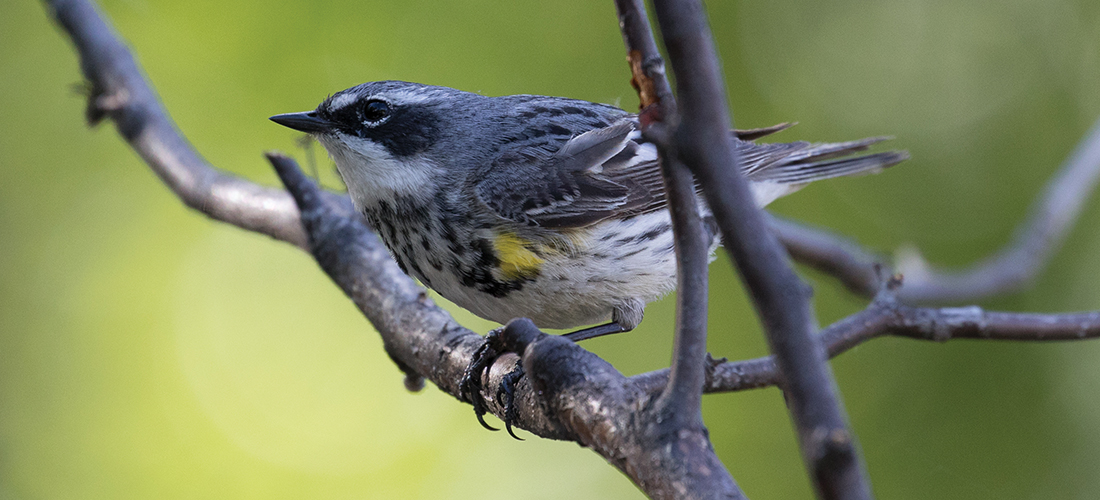
Fine Feathers
The unmistakable yellow-rumped warbler arrives with spring
By Susan Campbell
The days are getting longer, the temperatures are rising and the birds are definitely paying attention! More specifically, their hormones are reacting to increased daylight and the males are beginning to advertise their wares in preparation for the breeding season. Even some of our lingering winter visitors are becoming more noticeable as they sport brighter colors and begin to sing. The yellow-rumped warbler happens to be a shining example.
Yellow-rumpeds are a bird of the pine forests in summertime, but in winter they can be found all along the East Coast and throughout the Southern U.S. From mid-November until late April, they are quite common everywhere in North Carolina. As spring approaches, the birds acquire distinctive bright black and white plumage with splashes of yellow. The rump is indeed brightly colored as are the “shoulders” and the crown. These little birds, that previously may have gone undetected in your neighborhood, will turn into flashy little songsters with a beautiful warble that is now hard to ignore.
Yellow-rumped warblers, who are mainly insectivorous during the summer months, find plenty of small insects here in the central part of the state even in the colder months. Yellow-rumpeds will grab flies and midges in mid-air, beetles and spiders in thick vegetation. But they are also known for their adaptability when it comes to feeding. In addition to a variety of invertebrates that may be active in wet habitat, berries are a staple of the birds’ diet. In fact, their digestive system is such that they can consume wax myrtle and bayberry fruits. This is why you may hear these little birds referred to as “myrtle” warblers. Such adaptable foraging behavior allows these birds to winter considerably farther north than other warbler species in the United States. Furthermore, they will also visit feeding stations where suet or dried fruit or jelly are offered. And if they happen upon a hummingbird or oriole feeder, they’ll even drink sugar water.
If you visit the coast in the winter, you will likely come across huge flocks of these little birds. Their incessant “check” calls and flitting from branch to branch will give them away. As seasoned birdwatchers know, other unexpected species like blue-headed and white-eyed vireos and warblers such as black-and-white or palm may be occasionally mixed in these congregations. Careful sorting of these energetic small songbirds can be rewarding! Although it may take scrutinizing dozens and dozens of yellow-rumpeds before something different comes into view, it can be worth the effort. Regardless, enjoy these colorful little critters — soon they’ll take wing and head to the North. OH
Susan would love to receive your wildlife sightings and photos at susan@ncaves.com.





